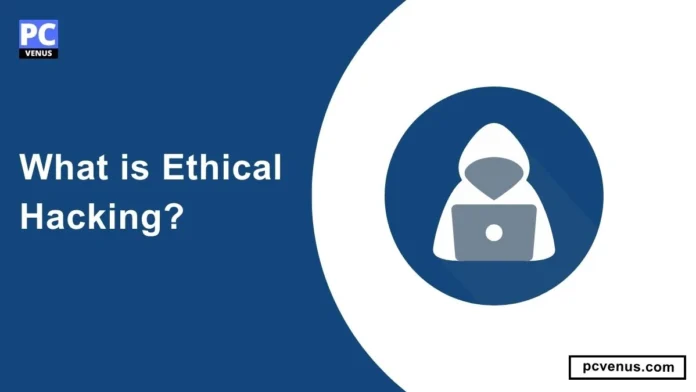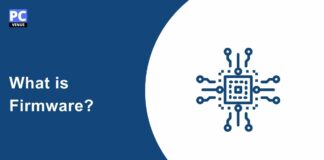In today’s digital age, cybersecurity is very important. Cyberattack opportunities also increase as the world becomes increasingly interconnected through the internet. This is where ethical hacking comes into play.
But what exactly is ethical hacking, and why is it crucial in cybersecurity?
This article will look into ethical hacking with a complete understanding of its concepts, techniques, and significance.
What is Ethical Hacking?
Ethical hacking refers to the practice of identifying and exploiting vulnerabilities in computer systems, networks, and applications to improve their overall security.
This proactive approach protects organizations, individuals, and governments against malicious hackers and potential cyber threats.
The Impact of Ethical Hacking on Cybersecurity
The impact of ethical hacking on cybersecurity is substantial and multifaceted.
Firstly, it helps organizations identify and understand their vulnerabilities from an attacker’s perspective. By simulating real-world attack scenarios, ethical hackers can identify weaknesses that may have gone unnoticed.
This knowledge can strengthen and fortify the organization’s defenses, protecting against potential cyberattacks.
Ethical hacking ensures compliance with industry standards and regulations.
Many sectors, such as finance, healthcare, and government, have specific data protection regulations that organizations must adhere to.
By conducting regular ethical hacking assessments, organizations can identify non-compliance issues and take corrective measures before they escalate into serious legal and financial consequences.
Ethical hacking contributes to better, more secure software and systems by regularly testing and identifying vulnerabilities. Ethical hackers provide feedback to developers, who patch these weaknesses, creating stronger, more resilient products and boosting cybersecurity.
It teaches people and organizations about cybersecurity. Showing how vulnerabilities can be exploited makes everyone realize the importance of strong security. This leads to a culture where people and organizations take security seriously and use better protection measures.
Understanding Hacking
Hacking refers to the act of gaining unauthorized access to computer systems, networks, or software applications to manipulate, steal, or tampering with data.
Hacking can take various forms, and it is essential to distinguish between ethical hacking and malicious hacking.
Ethical hacking, also known as white-hat hacking or penetration testing, refers to authorized and legal hacking activities conducted by cybersecurity professionals.
The main objective of ethical hacking is to identify vulnerabilities and weaknesses in computer systems, networks, or software applications.
Ethical hackers check an organization’s digital security to make it stronger and protect it from cyberattacks. They do this with the organization’s permission and help enhance security based on their findings.
On the other hand, malicious hacking, also known as black-hat hacking or cybercrime, refers to unauthorized and illegal hacking activities conducted by individuals or groups with malicious intent.
Malicious hackers exploit vulnerabilities in computer systems and networks for personal gain, such as stealing sensitive information, financial fraud, or causing damage to systems.
Their activities are driven by personal gain or disruption, and they do not have legal permission to access or manipulate the targeted systems. Malicious hacking is a criminal act and can result in severe legal consequences.
It is important to note that hacking itself is a neutral term and can refer to both ethical and malicious activities. The distinction lies in the intent and authorization behind the hacking.
| Aspect | Ethical Hacking | Malicious Hacking |
|---|---|---|
| Purpose | Improving security | Malicious intent |
| Authorization | Authorized and legal | Unauthorized and illegal |
| Conducted by | Cybersecurity professionals | Individuals with malicious intent |
| Intent | Protecting organizations and assets | Causing harm or personal gain |
| Legality | Legal and ethical | Illegal and unethical |
| Objective | Identifying vulnerabilities and | Unauthorized access, data theft, |
| strengthening security | disruption, or damage | |
| Cooperation | Cooperation with the organization | No cooperation with the victim |
| Outcomes | Security improvements and enhanced defences | Harm, data breaches, financial loss, and legal consequences |
Also Read:
What is Cache Memory? Everything You Need to Know
What is VR? Everything You Need to Know
Types of Ethical Hacking
There are various types of ethical hacking, each focusing on specific areas of cybersecurity. These types include:
1. Network penetration testing
In network penetration testing, experts check if a network is safe from bad people. They look at network devices, firewalls, routers, and switches to ensure they’re set up correctly and protected.
2. Web application penetration testing
Web application penetration testing focuses on assessing the security of web applications, such as websites, online portals, and web-based services.
It aims to identify vulnerabilities in the application code, databases, and server configurations that could allow unauthorized access or manipulation of data.
3. Wireless network testing
Wireless network testing involves assessing the security of wireless networks, such as Wi-Fi networks, to identify weaknesses in encryption protocols, authentication mechanisms, and configuration settings. The goal is to prevent unauthorized access to the network or eavesdropping on wireless communications.
4. Social engineering
Social engineering is a technique where ethical hackers attempt to manipulate human psychology to gain unauthorized access to systems or sensitive information. This can involve techniques such as phishing, pretexting, or impersonation to trick individuals into revealing confidential information or performing actions that compromise security.
5. Physical security testing
Physical penetration testing involves attempting to gain physical access to a facility or system by bypassing physical security measures. It identifies weaknesses in physical controls, such as locks, access control systems, surveillance cameras, and alarm systems.
6. Wireless security assessment
This ethical hacking type focuses on the security of wireless technologies, such as Bluetooth, RFID (Radio Frequency Identification), and NFC (Near Field Communication). It aims to identify vulnerabilities that could be exploited to gain unauthorized access or steal sensitive information.
7. Red teaming
Red teaming is a thorough and authentic emulation of a cyber assault, wherein ethical hackers assume the role of antagonists to evaluate an organization’s holistic security stance. This process encompasses various strategies and approaches to appraise the organization’s capacity to identify, react to, and rebound from an attack.
Also Read:
- What is Ray Tracing? Everything You Need to Know
- How Long Does Laptop Last? (Gaming, Business, MacBook)
Ethical Hacking Process
Ethical hacking involves several key steps to ensure a systematic and comprehensive approach to identifying vulnerabilities and improving cybersecurity. Here is a general outline of the ethical hacking process:
Step 1: Planning and Reconnaissance
This initial phase involves understanding the scope and objectives of the ethical hacking engagement. The ethical hacker conducts surveillance to gather information about the target system, including its infrastructure, network architecture, and potential entry points.
Step 2: Scanning
In this phase, the ethical hacker uses various tools and techniques to scan the target system for open ports, vulnerabilities, and potential weaknesses. This can include network scanning, vulnerability scanning, and web application scanning.
Step 3: Enumeration
The ethical hacker aims to gather more detailed information about the target system during this phase. This can involve identifying active services, users, and techniques on the network and potential associated vulnerabilities.
Step 4: Vulnerability Analysis
The ethical hacker analyzes the information gathered in the previous phases to identify and prioritize vulnerabilities that could be exploited. This includes assessing each vulnerability’s severity and potential impact on the system’s security.
Step 5: Exploitation
The ethical hacker exploits identified vulnerabilities in this phase to gain unauthorized access or perform further analysis. The goal is to simulate real-world hacking scenarios and determine the potential impact of successful attacks.
Step 6: Post-Exploitation
Once access has been gained, the ethical hacker explores the compromised system to gather additional information and assess the extent of potential damage. This phase helps in understanding the impact of a successful attack and the potential risks associated with it.
Step 7: Reporting
After completing the assessment, the ethical hacker prepares a detailed report outlining the identified vulnerabilities and recommended countermeasures and mitigation strategies. This report is shared with the organization’s management or IT team, enabling them to address the identified vulnerabilities and improve their cybersecurity position.
Step 8: Remediation
Based on the recommendations provided in the report, the organization takes necessary steps to fix the vulnerabilities identified. This can involve patching systems, updating software, strengthening access controls, or implementing additional security measures.
Step 9: Verification
After implementing remediation actions, the ethical hacker verifies whether the identified vulnerabilities have been effectively addressed. This verification ensures that the security improvements have successfully mitigated the identified risks.
Step 10: Ongoing Monitoring and Maintenance
Ethical hacking is not a one-time activity. It is essential to continuously monitor and maintain the security of systems to identify new vulnerabilities that may arise due to software.
Tools and Techniques in Ethical Hacking
Here are some commonly used tools and techniques in ethical hacking:
1. Network Scanning
Ethical hackers use tools like Nmap, Wireshark, and Nessus to scan networks for open ports, services, and potential attack vectors. This helps them identify potential vulnerabilities and weaknesses in network configurations.
2. Vulnerability Assessment
Tools such as Qualys, OpenVAS, and Nexpose are used to conduct vulnerability assessments. These tools scan systems and applications for known vulnerabilities and provide reports on potential security risks.
3. Password Cracking
Ethical hackers may use tools like John the Ripper, Hydra, and Hashcat to crack passwords and test the strength of an organization’s authentication mechanisms. This helps identify weak passwords and enforce more robust password policies.
4. Exploitation Frameworks
Tools like Metasploit and Burp Suite are widely used by ethical hackers to exploit vulnerabilities and gain unauthorized access. These frameworks provide a wide range of exploits and payloads to test the security of systems and applications.
5. Web Application Testing:
Ethical hackers use tools like OWASP ZAP, Acunetix, and Burp Suite to assess the security of web applications. They test for vulnerabilities like SQL injection, cross-site scripting (XSS), and insecure direct object references.
6. Wireless Network Testing
Tools like Aircrack-ng and Kismet are used to assess the security of wireless networks. Ethical hackers can perform tasks like sniffing network traffic, cracking WEP/WPA/WPA2 encryption, and detecting rogue access points.
7. Physical Security Assessments
Ethical hackers may also conduct physical security assessments by attempting to gain physical access to restricted areas or devices. This can involve lock picking, tailgating, or exploiting weaknesses in physical security controls.
8. Reverse Engineering
Ethical hackers may use tools like IDA Pro, OllyDbg, or Ghidra to analyze and reverse engineer software or malware. This helps them understand how a system or application works and identify potential vulnerabilities.
The Need for Ethical Hacking
The need for ethical hacking arises from the ever-growing threat landscape of cyber attacks. As technology advances, so do malicious hackers’ techniques and tools to exploit vulnerabilities in computer systems, networks, and software applications.
To effectively combat these threats, organizations must proactively identify and address vulnerabilities before they can be exploited.
Ethical hacking offers a regulated and sanctioned setting for experts to replicate real-world hacking situations and uncover potential system vulnerabilities.
Through the execution of penetration testing and vulnerability assessments, ethical hackers can evaluate an organization’s security status and pinpoint weaknesses that malicious individuals could leverage.
Also Read:
Skills and Qualities of Ethical Hackers
Some of the key skills and qualities of ethical hackers include:
1. Technical Proficiency
Ethical hackers deeply understand computer systems, networks, and the latest technologies. They possess various technical skills, including proficiency in programming languages, operating systems, network protocols, and cybersecurity tools. This knowledge allows them to analyze and exploit vulnerabilities in a controlled environment.
2. Problem-Solving Abilities
Ethical hackers are skilled at solving problems. They’re naturally curious and have an analytical mindset, allowing them to think critically and creatively. They can predict security risks and come up with clever solutions to address them effectively.
3. Continuous Learning
Cybersecurity constantly evolves, and ethical hackers must keep up with the latest developments. They continuously learn and stay updated with emerging threats, new hacking techniques, and changing security measures.
4. Strong Ethical Standards
Just like the name says, ethical hackers follow strict rules. They know getting permission before checking security, keeping things private, and being responsible when finding problems is essential. Their good behavior keeps everything legal and makes organizations trust them.
5. Communication Skills
Ethical hackers not only possess technical expertise but also excel in communication skills. They can effectively communicate complex technical concepts to non-technical stakeholders, such as business executives or IT departments. Additionally, they can provide clear and concise reports detailing their findings and recommendations for remediation.
6. Persistence and Perseverance
Hacking can be a challenging and time-consuming process. Ethical hackers must possess the determination and patience to persistently search for vulnerabilities, even in the face of obstacles. They are motivated by the prospect of securing systems and are relentlessly finding and fixing security weaknesses.
7. Teamwork and Collaboration
The Ethical hacking is often a team effort, especially in larger organizations. Ethical hackers must collaborate effectively with other cybersecurity professionals, IT teams, and management to implement comprehensive security measures.

Ethical Hacking Challenges and Ethical Dilemmas
Like any profession, ethical hacking comes with its own challenges and ethical dilemmas.
1. Legality
Ethical hackers must operate within legal boundaries. Determining what actions are legal when testing and probing systems for vulnerabilities can be challenging. Understanding and following applicable laws and regulations ensures that ethical hacking is conducted lawfully.
2. Informed Consent
Obtaining proper consent from the system owner before conducting any security testing is essential. However, gaining consent can sometimes be difficult, especially when dealing with third-party systems or when the owner is unaware of the need for security testing.
3. Privacy Concerns
Ethical hackers often access sensitive information during their testing, which raises privacy concerns. Striking a balance between identifying and reporting vulnerabilities while respecting the privacy of individuals and organizations can be challenging.
4. Impacts of Testing
Testing for vulnerabilities can inadvertently cause disruptions or impact the stability of systems. Ethical hackers must take precautions to minimize the potential negative consequences of their activities and ensure that systems are not damaged or disrupted in the process.
5. Dual-Use Tools and Techniques
Ethical hackers utilize tools and techniques that can be used for both ethical and unethical purposes. Ensuring these tools are used responsibly and solely to secure systems requires careful consideration and a strong ethical mindset.
6. Conflicts of Interest
Ethical hackers may work in various capacities, such as consultants or employees of organizations. Balancing the interests of the organization they work for, the clients they serve, and the need for unbiased and objective assessments can present ethical dilemmas.
7. Disclosure of Vulnerabilities
Once a vulnerability is discovered, ethical hackers face the challenge of responsibly disclosing it. Deciding when and how to disclose vulnerabilities to the system owner or the public requires careful consideration of potential impacts and the risk of exploitation.
Legal Aspects and Regulations
Legal aspects and regulations surrounding ethical hacking vary from country to country and are subject to local laws. Ethical hackers must be aware of and comply with the legal framework applicable to their activities.
1. Authorization
Ethical hackers must obtain proper authorization before conducting any security testing. Having written permission from the owner or authorized representative of the system, network, or application being tested is essential. Unauthorized hacking activities can lead to legal consequences.
2. Non-Disclosure Agreements (NDAs)
Ethical hackers may be required to sign NDAs, especially when working with organizations that want to protect their confidential information. NDAs establish the terms and conditions for handling and sharing sensitive information obtained during security testing.
3. Computer Fraud and Abuse Act (CFAA)
In the United States, the CFAA is a federal law that addresses unauthorized access to computer systems. Ethical hackers should be familiar with the provisions of this law to ensure they comply with its requirements.
4. Data Protection and Privacy Laws
Ethical hackers should be aware of data protection and privacy laws that govern the collection, storage, and processing of personal and sensitive data. This includes regulations like the European Union’s General Data Protection Regulation (GDPR) or the California Consumer Privacy Act (CCPA).
5. Bug Bounty Programs
Many organizations have bug bounty programs encouraging ethical hackers to report security vulnerabilities. These programs often have rules, guidelines, and legal agreements that ethical hackers must adhere to when participating.
6. Responsible Disclosure
Ethical hackers should follow responsible disclosure practices when reporting vulnerabilities. This involves notifying the affected organization promptly, providing sufficient details to reproduce the vulnerability, and allowing a reasonable timeframe for the organization to address the issue before public disclosure.
How to Become an Ethical Hacker?
To become an ethical hacker, you can follow these steps:
Develop technical skills
Educate yourself with programming languages like Python, C/C++, Java, or Ruby. Gain knowledge of network protocols, operating systems, web technologies, and database systems—practice using ethical hacking tools and frameworks.
Develop an ethical mindset
Understand the importance of ethical guidelines and legal boundaries in ethical hacking. Respect privacy and confidentiality, and always obtain proper authorization before conducting security testing. Maintain integrity and honesty in your work and responsibly disclose vulnerabilities.
Obtain a strong foundation in computer science or a related field
Start by gaining a solid understanding of computer systems, networks, programming languages, and cybersecurity principles. A degree in computer science, information technology, or a related field can provide a strong foundation.
Gain experience and practical knowledge
Engage in hands-on learning experiences such as participating in capture-the-flag (CTF) competitions, bug bounty programs, or open-source projects. This will allow you to apply your skills in real-world scenarios and expand your knowledge.
Pursue certifications
Ethical hacking certifications can validate your skills and enhance your credibility. Some popular certifications include Certified Ethical Hacker (CEH), Offensive Security Certified Professional (OSCP), and Certified Information Systems Security Professional (CISSP).
Stay updated with the latest security trends
Cybersecurity is a rapidly evolving field. Stay informed about new hacking techniques, emerging threats, and changing security measures. Attend conferences, workshops, and training programs to stay updated with industry developments.
FAQs
Is Ethical Hacking Legal?
Yes, ethical hacking is legal as long as it is conducted with proper authorization. Ethical hackers must obtain explicit consent before testing a system’s security.
How Do I Become an Ethical Hacker?
Becoming an ethical hacker typically requires a strong cybersecurity, networking, and programming foundation. You can start by pursuing relevant certifications and gaining practical experience.
Are Ethical Hackers Paid Well?
Yes, ethical hackers are often well-compensated for their skills and expertise. The demand for cybersecurity professionals continues to rise, making it a lucrative career choice.
Can Ethical Hacking Prevent All Cyberattacks?
While ethical hacking effectively identifies and mitigates vulnerabilities, it cannot guarantee 100% protection against all cyberattacks. It is just one component of a comprehensive cybersecurity strategy.
Do Ethical Hackers Work Alone?
Ethical hackers often work as part of a larger cybersecurity team within an organization. Collaboration and information sharing are essential in this field.
How Often Should Ethical Hacking Assessments Be Conducted?
The frequency of ethical hacking assessments varies depending on the organization’s size, industry, and regulatory requirements. Regular assessments are generally advisable, with some organizations opting for quarterly or annual evaluations.




